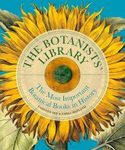![Linnaeus' Philosophia Botanica Linnaeus' Philosophia Botanica]()
Click to have a closer look
About this book
Contents
Customer reviews
Related titles
About this book
Welcome paperback issue of this lovely book.
Philosophia Botanica (The Science of Botany), by Carl Linnaeus, was originally published in Latin in Stockholm and Amsterdam in 1751. It is a greatly expanded revision of his Fundamenta Botanica (Foundations of Botany) of 1736, summarizing his work on the classification and taxonomy of plants while adding substantial new material.
The book represents a critical stage in the evolution of binomial nomenclature, with a single word to describe the genus and another for the species. Special importance is attached to accurate description of the parts of plants, and to the correct use of technical terms. There are also explanations of the effects of soil and climatic conditions on plant growth.
The book includes 10 original engravings, with 167 figures showing the shapes of leaves and other parts of the plant, and 6 short memoranda describing Linnaeus' botanical excursions, detailing his ideas for garden and herbarium construction, and outlining what is required of a botanist and his pupils. There are also indexes of technical terms, genera, and subjects.
The first full English translation of this classic work since 1775, this beautiful book will be highly attractive to botanists and all those interested in the history of science.
Contents
Introduction; 1. The library; 2. Systems; 3. Plants; 4. The fruit body; 5. Sex; 6. Characters; 7. Names; 8. Definitions; 9. Varieties; 10. Synonyms; 11. Sketches; 12. Potencies; Plates; Appendices
Customer Reviews
By: Stephen Freer
432 pages, 12 line illustrations
New paperback edition of this marvellous edition of Linnaeus' classic work
... Linnaeus's text of 1751, rendered into a flowing and eminently readable English and "This book is beautifully produced and well-illustrated. Stephen Freer is to be congratulated on his translation which easily brings 18th century Latin to a modern readership." Dr Mark Newman, Edinburgh Journal of Botany, Dec/Jan. 2006 "The translator's meticulous attention to detail and the publisher's lavish production cannot be praised too highly." The Naturalist, July 2006 "... reading this excellent translation ... Reviewers of the hardcopy edition have already heaped praise on Stephen Freer's skilful and meticulous translation. I can only add gratitude for providing easy access to one of Linnaeus's most important texts." (Prof. Pieter Baas, The Linnean, October 2006). Linnaeus's Philosophia Botanica is, among other things, a timely reminder of the importance of the classificatory enterprise and the need to continue it. The Times Literary Supplement The translator's meticulous attention to detail and the publisher's lavish production cannot be praised too highly. A valuable resource for taxonomists and of great interest to botanists in general and historians of science. The Naturalist "As translator, Freer is in a sense invisible in this work, and yet his hand is on every page, presenting Linnaeus' ideas and teachings to a new and wider audience ... straightforward and very readable. This translation is an important contribution to science and its history ..." Charlotte Tancin, Hunt Institute for Botanical Documentation, June 2006. "Reading this excellent translation of the Philosophia Botanica, ... historians, botanists and gardeners are among those who will find it fascinating" Jim Endersby, The Times Literary Supplement, March, 2006 "We must be grateful to Stephen Freer and Oxford University Press for bringing us this excellent translation. I urge you not only to buy it but also to read it, because you will enjoy it." Alex S. George, Systematic Biology, Vol. 55, 2006 Readers of a review commonly wish to know whether the work is worth buying. For this translation the answer is a resounding 'Yes!'. Systematic Biology, Vol. 55 (3):534-536, 2006 All in all this is a delightful and informative translation of a botanical classic...Anyone interested in the history of botany and in teaching botany will enjoy and benefit from reading this book. Plant Science Bulletin, Fall 2005, Vol.51, No.3




































